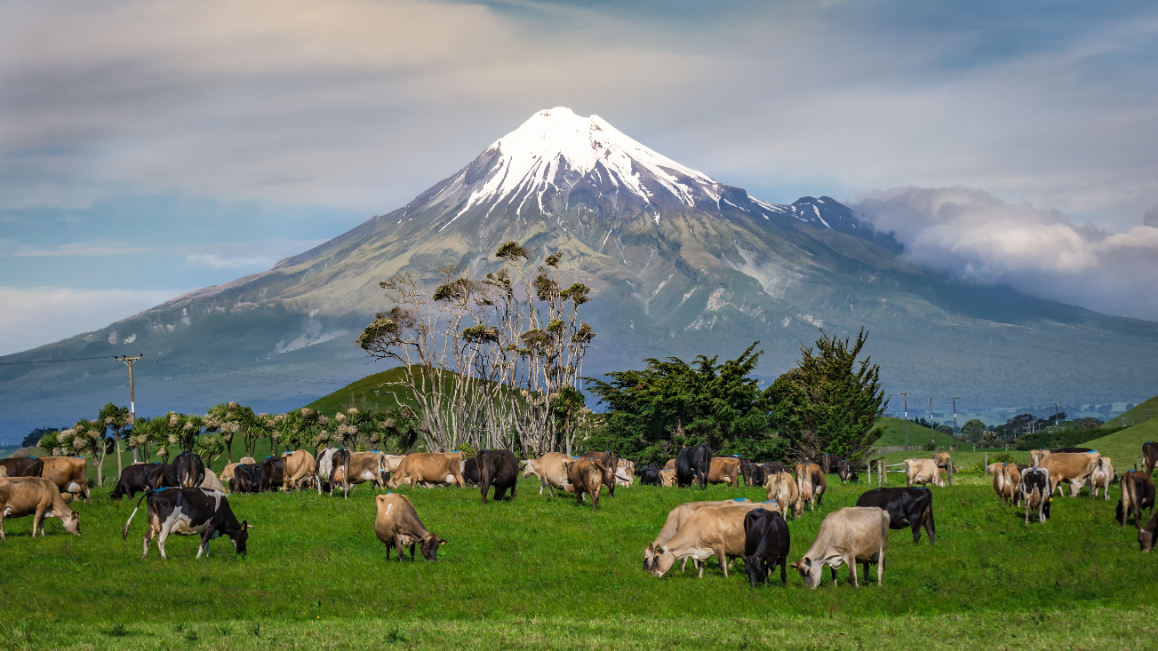
New Zealand’s farming emissions levy can bring a ‘win-win’ to economy and environment
Investors are already baking in the upcoming emissions pricing policy into acquisition deals.
The US Environmental Protection Agency (EPA) estimates that global emissions from agriculture, forestry and land use account for almost a quarter of the planet’s total.
For landowners and investors, the pivot to net zero demands a better understanding of agricultural emissions and, notably, how the price of agricultural emissions can be calculated and what macroeconomic effects it may have on future farmland investments.
The New Zealand government is at the fore of developments within this space, with agriculture accounting for half the country’s gross emissions, the Ministry for the Environment states.
Its proposal for agricultural emission pricing is for a farm-level process of reporting greenhouse gas (GHG) output, with farm operators responsible for both reporting and footing the bill via a levy, on top of two options for pricing synthetic nitrogen fertiliser emissions.
Owing to the urgency of the issue, the New Zealand government has prepared secondary measures, should the farm-level levy not be implemented by 2025. In its place will be an interim processor-level levy, acting as a transitional step.
Levy revenues will be used to research technology to help lower on-farm emissions. Incentive payments will also be offered to encourage farmers to adopt emission-mitigation techniques and technologies.
The proposal has been three years in the making, spearheaded by He Waka Eke Noa, a partnership between New Zealand’s government, Māori and farming industry, and is now undergoing a public consultation.
“New Zealand has often led the way in agriculture and we welcome the fact that the government has decided to apply pricing at the farm level in line with the findings of the industry body, He Waka Eke Noa,” says New Zealand Superannuation Fund (NZ Super Fund) senior investment strategist, sustainable investments, Lucas Kengmana.
He says it is important for pricing to be at the farm level “in order to create the incentives to reduce emissions”.
In practice, farmers will pay a fee for the emissions they produce and report on. The level of the fee will be calibrated to deliver the methane-reduction targets set out in the Zero Carbon Act, New Zealand’s wide-ranging climate change policy
“Agriculture makes up a significant part of global emissions so we expect that tackling emissions will play a critical role in getting access to markets and consumers, and other countries will take action to reduce their emissions over time,” Kengmana adds.
We believe that there are some economic and climate win-wins which can be delivered through changing farm management practices.
Harvesting capital
But with farmers bearing the costs of the proposed policy, questions have been raised about the impact it may have on the attractiveness of agricultural land to investors.
The NZ Super Fund is already considering the impact of a price on agricultural GHG emissions when it purchases agricultural assets, says Kengmana, primarily by adding a “hypothetical emissions price” to its financial assessment of a farm.
Supplementing the pricing strategy is a collaboration with partners in the field, tasked with reducing overall emission output. NZ Super Fund’s farm manager FarmRight has delivered an 8% reduction in emissions per hectare for the fund’s dairy portfolio and a 22% drop in GHG per hectare across its portfolio overall over the last four years “while delivering a strong financial performance,” Kengmana adds – evidence that the ‘on-farm’ approach can generate desired outcomes.
“We believe that there are some economic and climate win-wins which can be delivered through changing farm management practices,” Kengmana says.
But beyond New Zealand, a two-pronged headwind risks holding other markets back – capital and accounting.
Speaking at the Natural Capital Finance & Investment Conference 2022 in London, Andrew Mitchell, vice chair of the stewardship council for the Task Force for Nature-Related Financial Disclosures, said that land use issues are being overlooked by governments in favour of other industries.
“Forests and agriculture could provide 40% of what we need to do to remove emissions globally, but they get 3% of finance because governments find it easier to talk about changing industry and building infrastructure,” he said.
Global laggards
Meanwhile, New Zealand’s accounting preparedness stands in contrast to developments in the UK and elsewhere in the world. While the UK has an established accounting system for agricultural emissions, there is currently no system for farm-level monitoring, reporting and verification of emissions.
A report into developing the UK’s Emissions Trading Scheme (UK ETS) from the Department for Business, Energy and Industrial Strategy (BEIS) found that direct monitoring of emissions at the farm level is “currently neither practical nor affordable,” and although several farm carbon assessment tools exist, there is “a lack of standardisation”, which has led to “confusion and lack of confidence within the sector and may be a barrier to uptake”.
But efforts to link emissions from agriculture to a cash value are beginning to emerge, with the use of carbon credits at the farm level being trialled in a pathfinder project at a former dairy farm in Somerset, with carbon credits being sold by Wilder Carbon.
More broadly, the UK ETS, built on the foundations of the EU’s programme, currently targets high-emitting sectors such as oil and gas, but earlier this year BEIS consulted on proposals to expand the UK ETS “across the economy”.
For now, attention will be fixed on New Zealand, and what lessons can be learned as the emissions trading scheme takes off.




